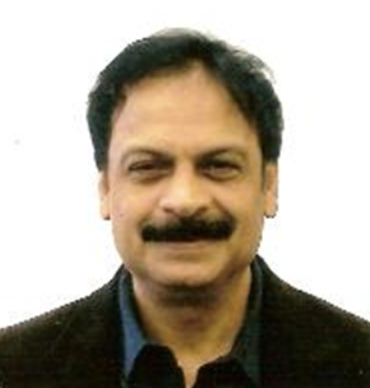
Prabhakar Misra, Ph.D.
Fulbright Scholar & Fellow of The American Physical Society (APS)
Professor of Physics & Director of the Laser Spectroscopy Laboratory
Howard University
Book:Spectroscopy and Characterization of Nanomaterials and Novel Materials: Experiments, Modeling, Simulations, and Applications | Wiley
Dr. Misra has been a recipient of the NASA Administrator’s Fellowship Program (NAFP) award (administered by the National Research Council, NRC) and was a visiting faculty fellow at the NASA Goddard Space Flight Center in Greenbelt, MD during the 1999-2000 academic year and an NRC faculty fellow at the Aeronautics and Space Engineering Board of the National Academy of Sciences in Washington, DC during the 2000-2001 academic year. During the Summer of 2007, he was a NASA Exploration Systems Mission Directorate (ESMD) Faculty Fellow at Langley Research Center, VA, and Goddard Space Flight Center, MD (June-August 2007). He has also successfully completed the Massachusetts Institute of Technology (MIT) Research Directors Conference (April 19-20, 2001). Dr. Misra has been a Member of Conference Program Committees and Session Chair of more than 20 invited and contributed paper sessions on spectroscopy and lasers. He has served as a guest referee for the Journal of Physical Chemistry, Journal of Propulsion & Power, Physica B, Journal of Geoscience Education, Journal of Chemical Engineering Communications, Journal of Computer Modeling in Engineering & Sciences, Journal of Lightwave Technology, Journal of Quantitative Spectroscopy & Radiative Transfer, Journal of Molecular Structure and Applied Optics. Dr. Misra has reviewed research proposals for the National Science Foundation (NSF), NASA, Agency for International Development (AID), National Institutes of Health (NIH), College Board/Educational Testing Service (ETS), Advanced Placement (AP) Physics, American Society for Engineering Education (ASEE) and the Universities Space Research Association (USRA). He was a Fulbright Scholar and Visiting Professor in the Department of Chemical Sciences at the Tata Institute of Fundamental Research in Mumbai, India (2004-05). He served as President of the Howard University Chapter of Sigma Xi, the Scientific Research Society (2013-14). He currently serves as the Society of Physics Students (SPS) Chapter Advisor He is currently affiliated as a Visiting Scientist & Research Affiliate in the Planetary Environments Laboratory (Code 699) at NASA Goddard Space Flight Center (2010-present). He is also a Research Affiliate & Investigator at the National Consortium for the Study of Terrorism & Responses to Terrorism (START), University of Maryland, College Park, MD (2014-present).
Dr. Misra has been a Principal Investigator (1992-96) and an Associate Principal Investigator (1997-2007) for the multi-million-dollar NASA-funded Center for the Study of Terrestrial & Extraterrestrial Atmospheres (CSTEA), and a PI/Co-PI on more than 30 internally and externally funded research grants. Dr. Misra has advised and mentored more than 50 undergraduate students, graduate students, postdoctoral research associates, and early career scientists who have been part of his research group.
Dr. Misra is (or has been) a member of the Society of Photo-Optical Instrumentation Engineers (SPIE), American Association of University Professors (AAUP), the New York Academy of Sciences (NYAS), American Mensa, Sigma Xi, American Association of Physics Teachers (AAPT), and the American Geophysical Union (AGU). He is a Senior Member of the Optical Society of America (OSA), lifetime member of the Fulbright Association, and a fellow of the American Physical Society (APS) and the American Society for Laser Medicine & Surgery (ASLMS), Inc..
OUR TEAM

Prabhakar Misra, Ph.D.
Fulbright Scholar & Fellow of The American Physical Society (APS)
Leads the Laser Spectroscopy Laboratory
Email: [email protected]
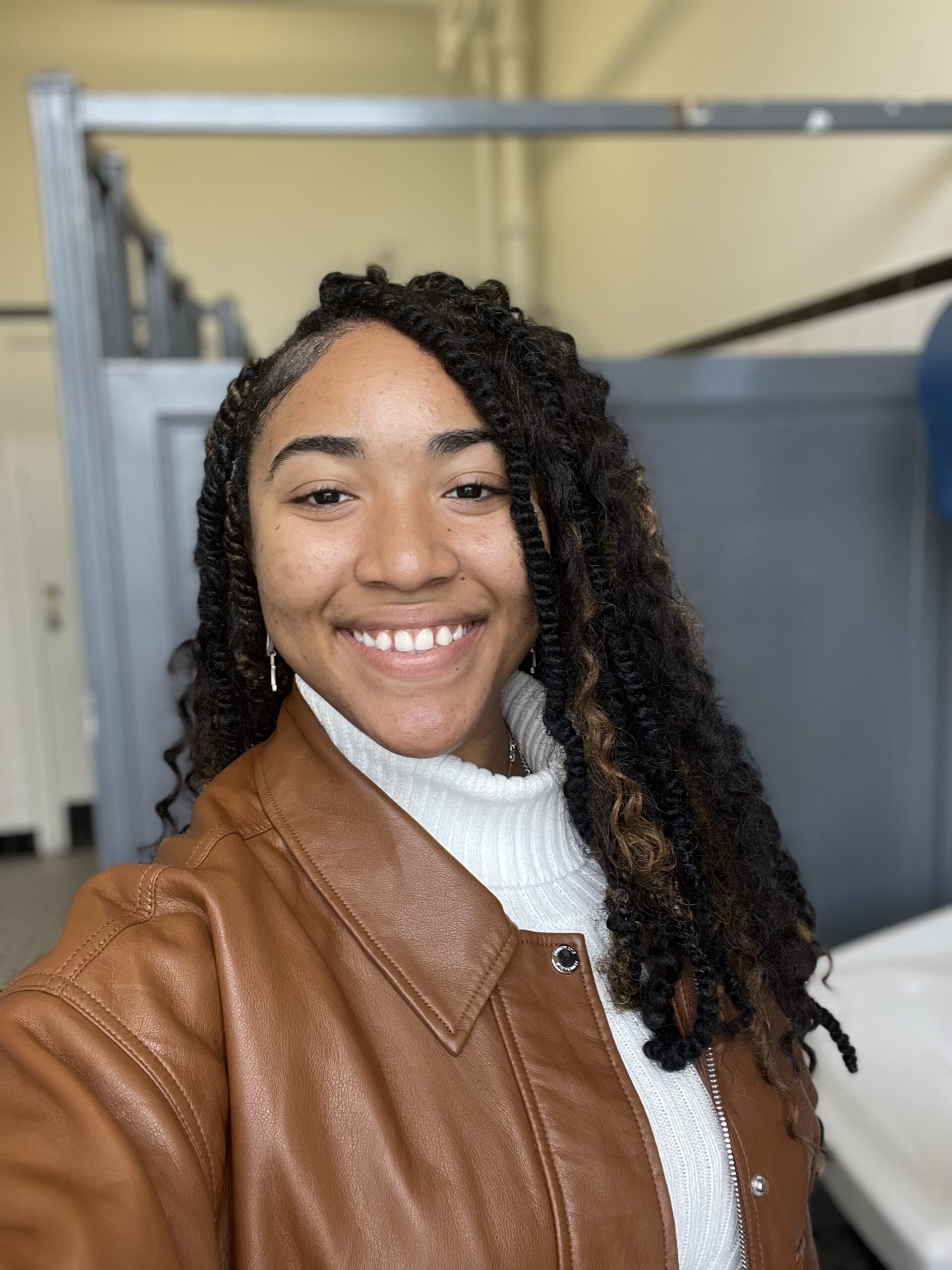
Anverly Jones
College of Engineering and Architecture, Computer science major
Research Project: Standoff Raman spectroscopy of lunar analog minerals
Expected graduation: 2026
E-mail address: [email protected]
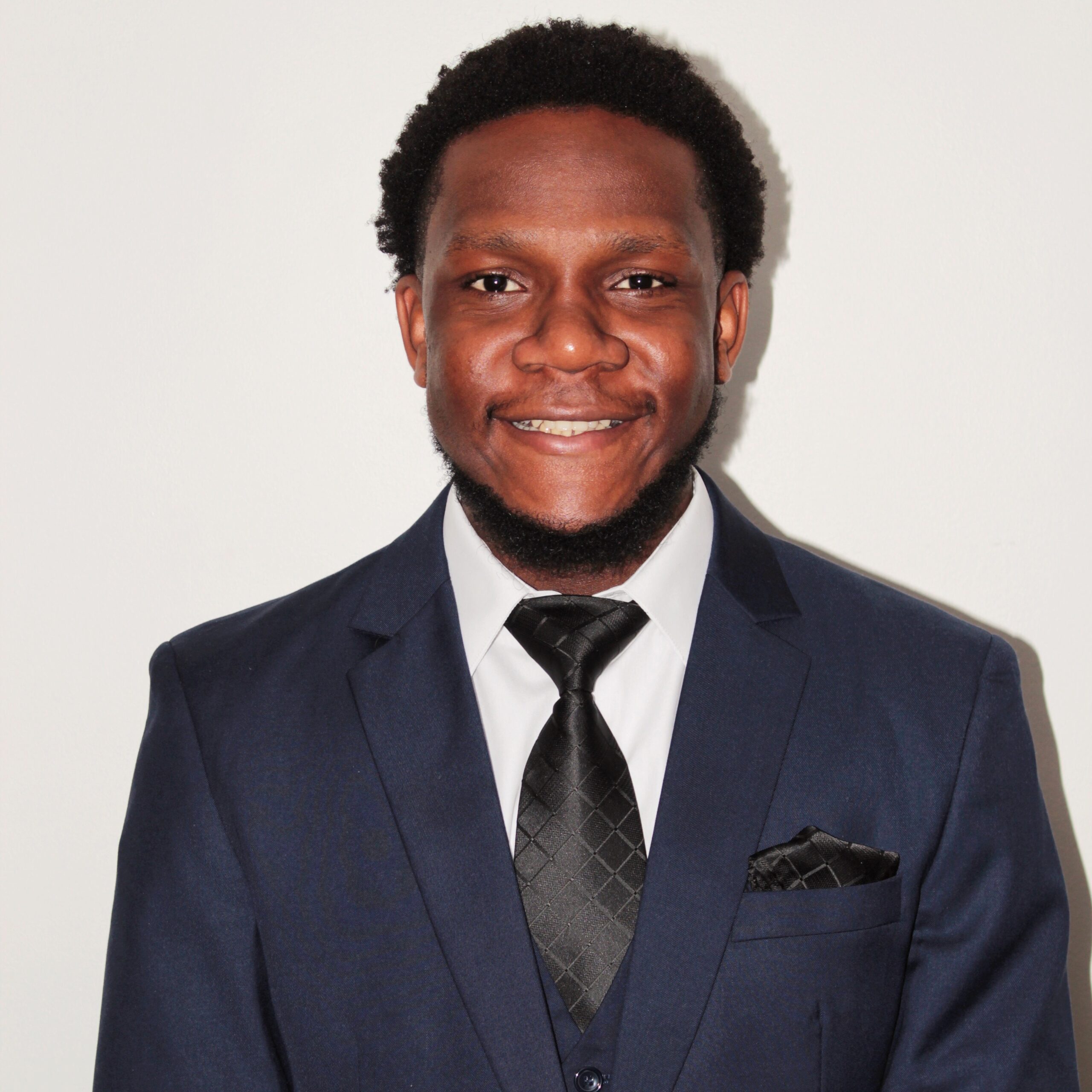
Jefferson Ogbuka
College of Engineering and Architecture, Mechanical Engineering major
Research Project: Modeling, simulation, and Raman spectroscopy of piezoelectric quantum dots
Expected graduation: 2025
E-mail address: [email protected]
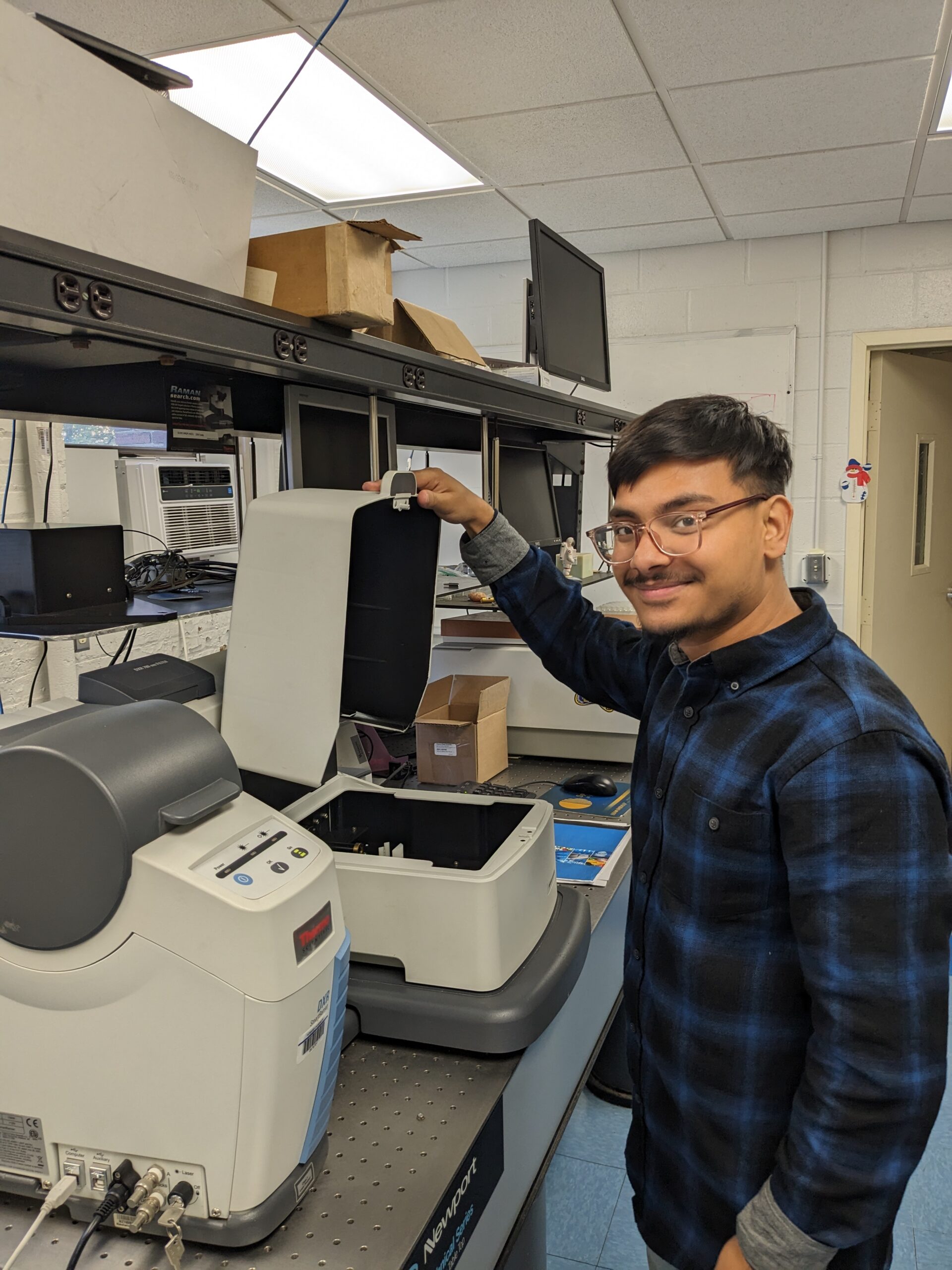
Bipul Gyawali
College of Engineering and Architecture, Computer Science major
Research project: Electronic structure and band calculations of ZnO & ZnS quantum dots
Expected graduation: 2026
E-mail address: [email protected]
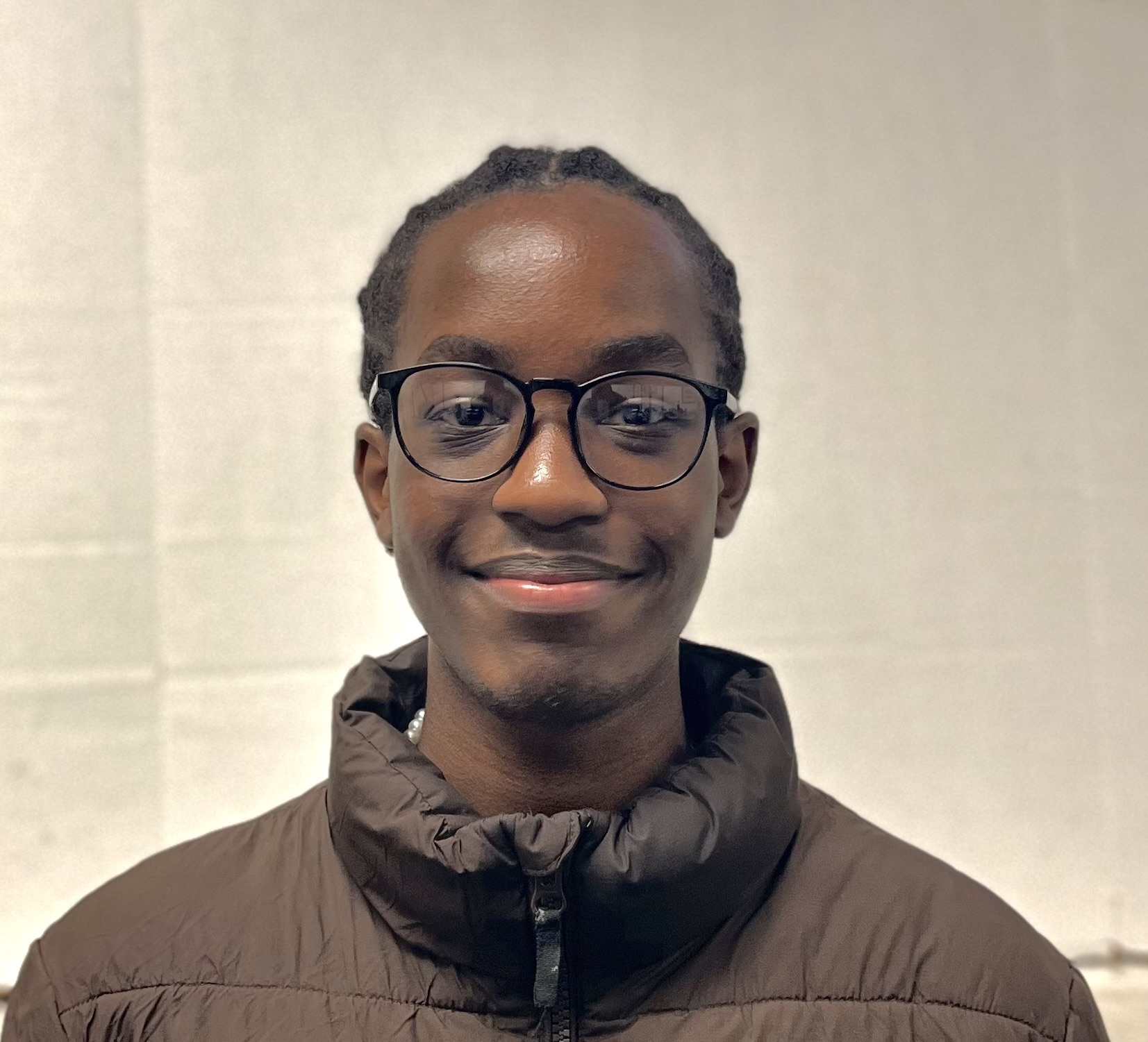
David Mugisha
College of Arts and Sciences, Physics major
Research project: Characterization of minerals and nanomaterials using Raman spectroscopy
Expected graduation: 2026
E-mail address: [email protected]

Zakiya Williams
College of Arts and Sciences: Physics Major, Math minor
Research Project: Modeling and Simulation of Piezoelectric Zinc Sulfide Quantum Dots
Expected Graduation: 2026
E-mail address: [email protected]
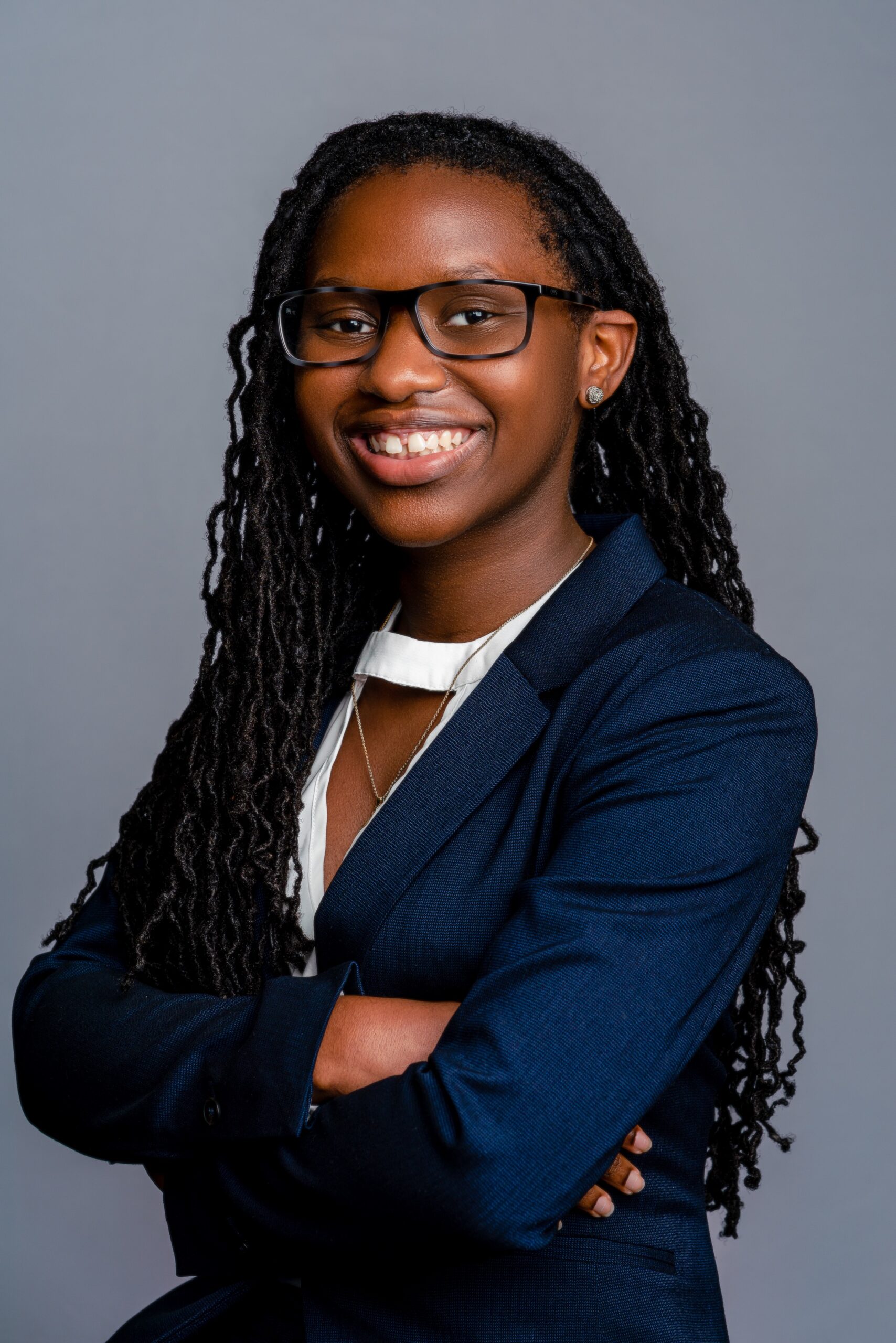
Kennedi White
College of Arts and Sciences, Physics Major & Math Minor
Research Project: Variation of the Moon’s Solar-Induced Hydrogen Cycle During Solar Storms.
Expected graduation: 2025
E-mail address: [email protected]
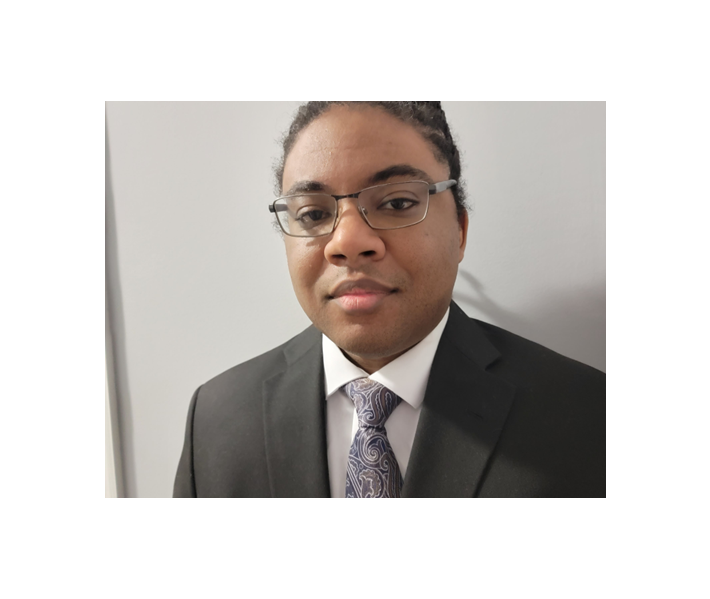
LaRay Hare
Department of Physics & Astronomy, Graduate Student
Research Project: Standoff Raman Spectroscopy for Lunar Science & Exploration
Expected Ph.D. graduation: 2028
E-mail address: [email protected]
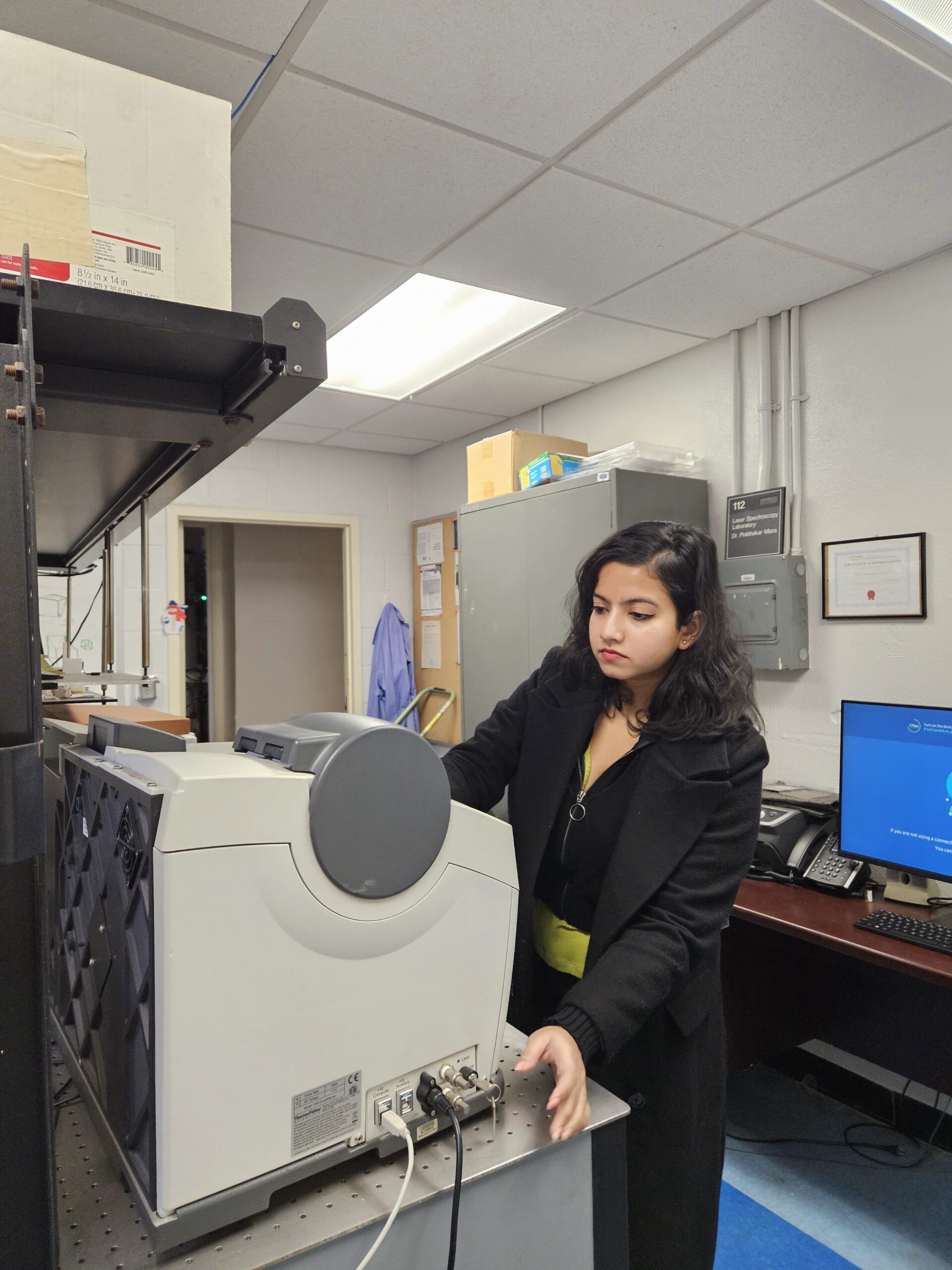
Saumika Bandopadhyay
Department of Physics & Astronomy, Graduate Student
Research Project: Raman Spectroscopy of Molybdenum Disulfide
Expected Ph.D. Graduation: 2028
E-mail address: [email protected]

Wisdom Benson
Department of Physics & Astronomy, Graduate Student
Research Project: Modeling and Simulation of Piezoelectric Quantum Dots
Expected Ph.D. Graduation: 2029
E-mail address: [email protected]
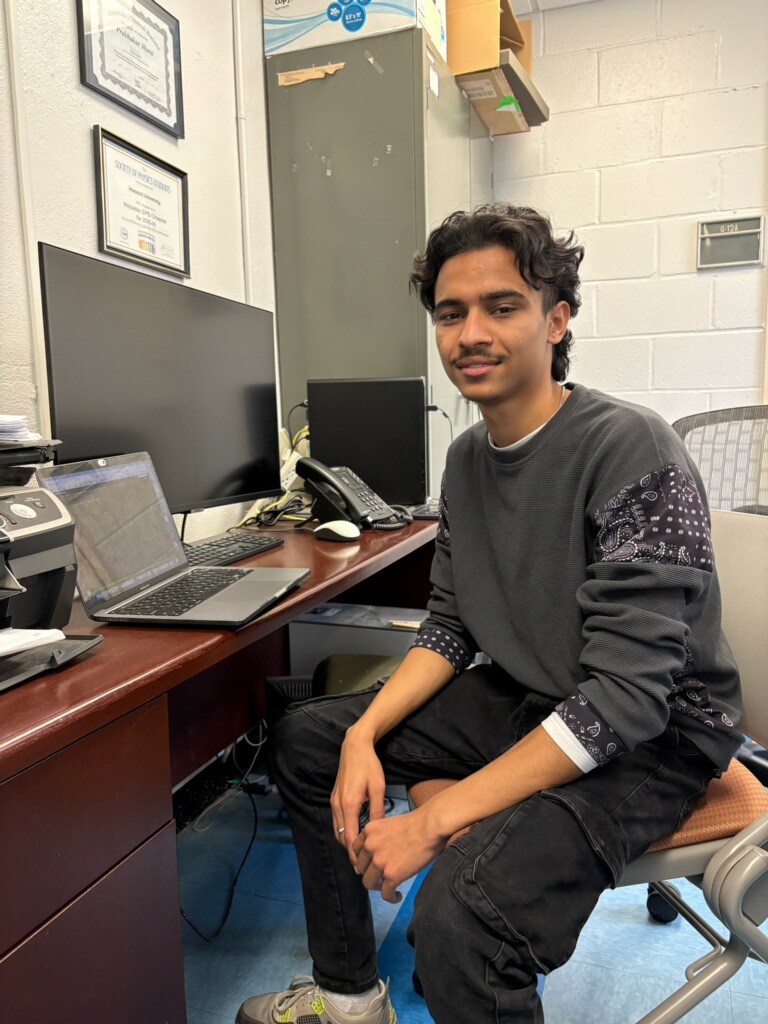
Basanta Baral
College of Engineering and Architecture, Computer Science Major
Research Project: Determination of band structure and vibrational characteristics of piezoelectric quantum dots using Density Functional Theory (DFT)
Expected Graduation: 2026
E-mail address: [email protected]
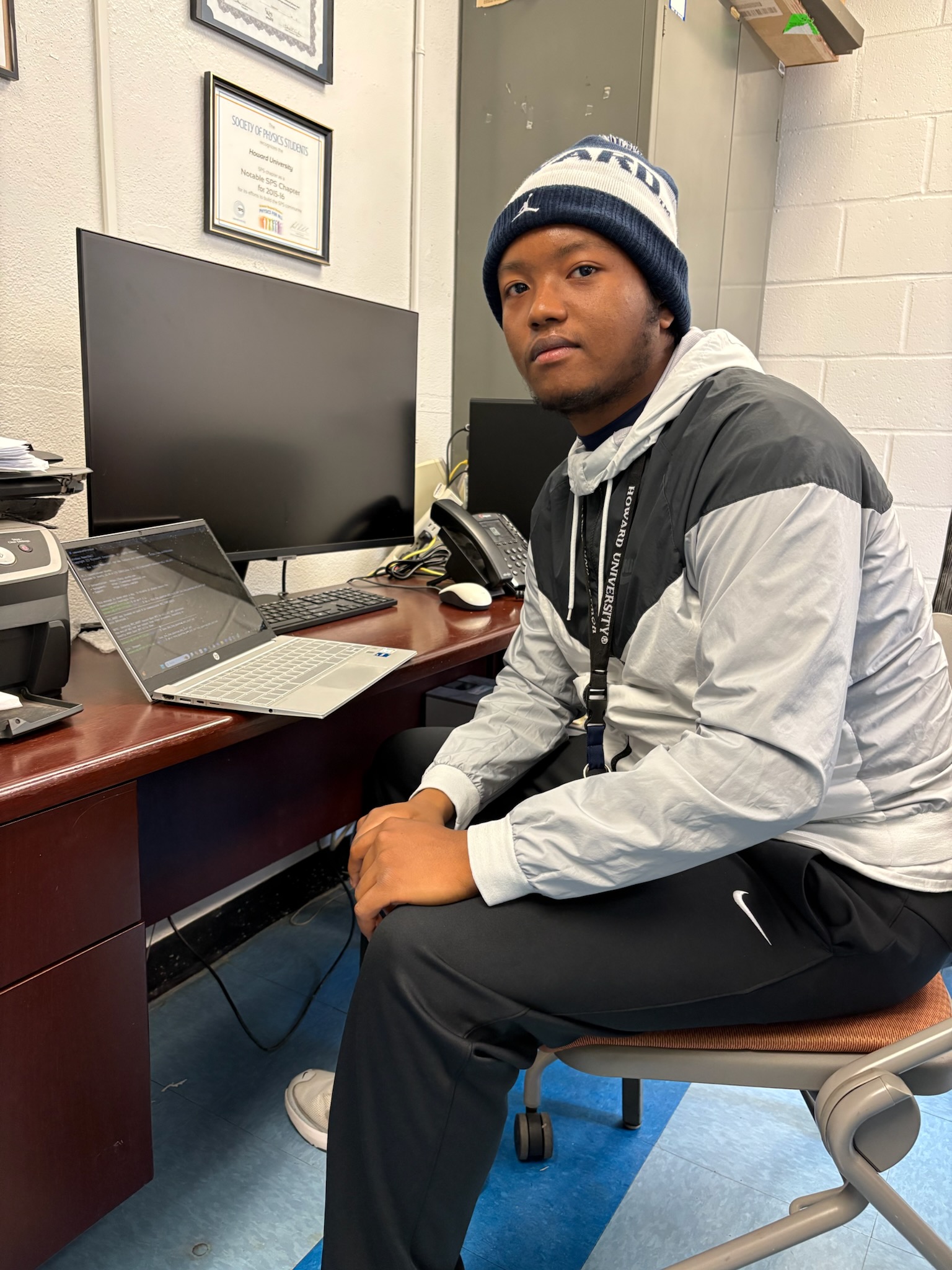
Chase Adams
College of Engineering and Architecture, Computer Science Major & Mathematics Minor
Research Project: Modeling and Simulation of Piezoelectric Quantum Dots; calculating the band structure and density of state for ZnS and ZnO quantum dots.
Expected Graduation: 2026
E-mail address: [email protected]
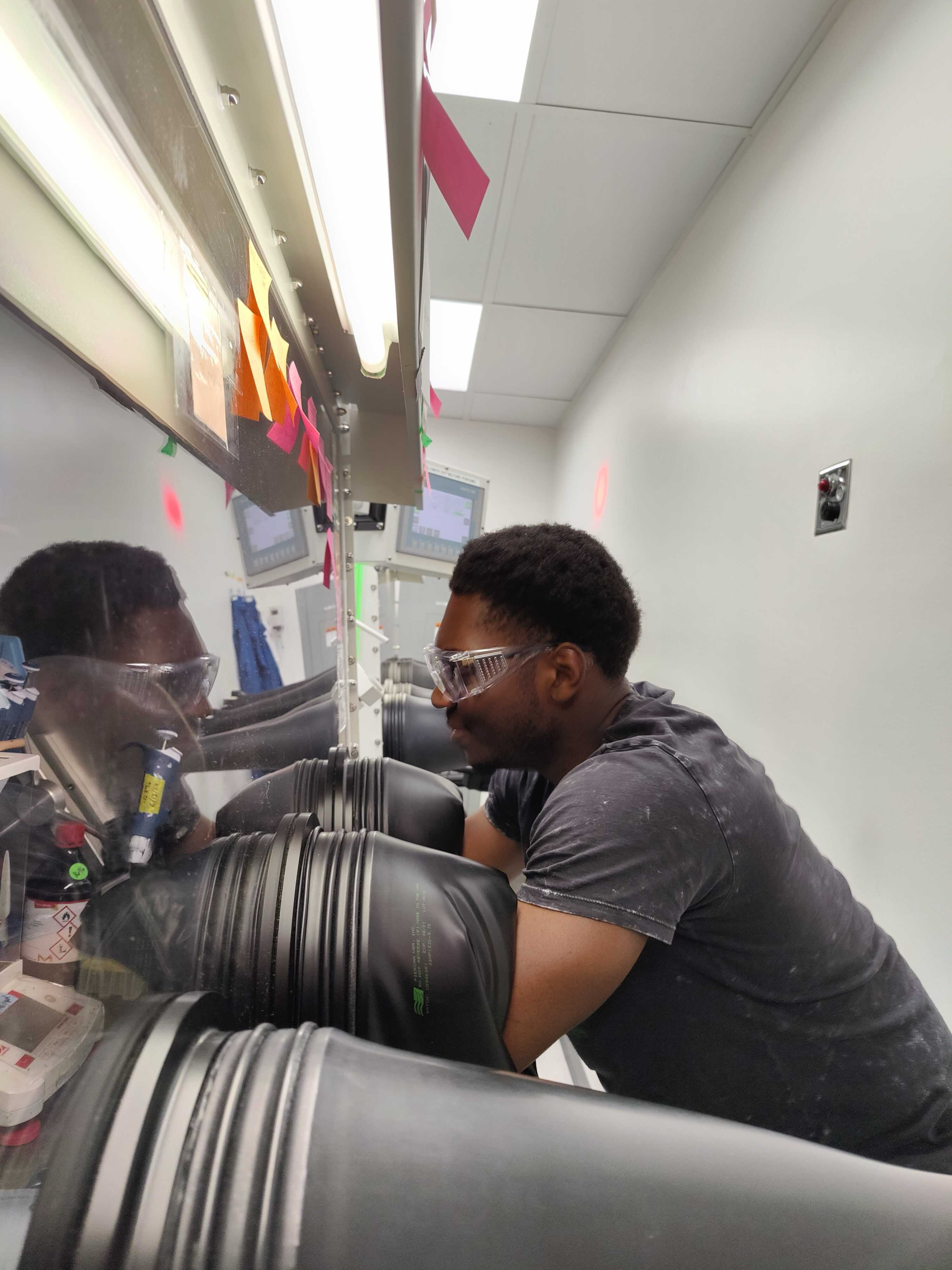
Oluwaseun Adeyeye
College of Engineering and Architecture, Electrical Engineering Major & Computer Science/Math Minor
Research Project: Raman spectroscopy of lunar analog minerals using machine learning modeling and simulation
Expected Graduation: 2026
E-mail address: [email protected]
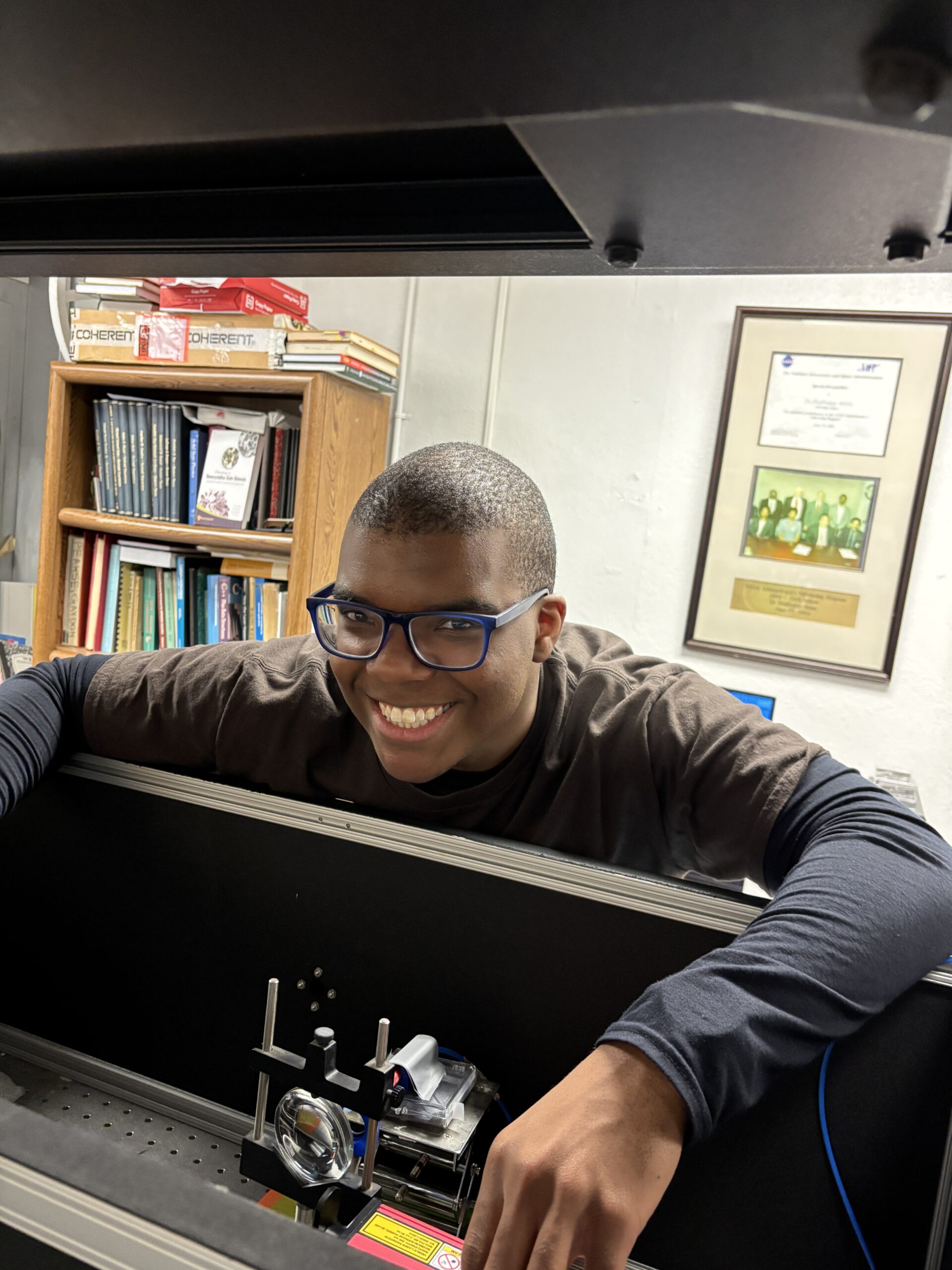
Jordan Sexton
College of Arts and Sciences, Physics Major & Math Minor
Research Project: Raman spectroscopy of lunar analog materials
Expected Graduation: 2027
E-mail address: [email protected]
PAST TEAM MEMBERS
Ph. D. Students
- Hawazin Alghamdi (Graduate Student: Physics) Supported on Graduate Teaching Assistantship. D. Dissertation (Co-Advisor with Dr. Silvina Gatica): “Temperature-Dependent Spectroscopic Characterization and Computational Study of Tin Dioxide for Gas-Sensing Applications,” (2018-2023; Graduated: Spring 2023).
- Olasunbo Farinre (Graduate Student: Physics) Supported on Graduate Teaching Assistantship. D. Dissertation: “Spectroscopic Characterization and Computational Study of Pristine and Functionalized Graphene Nanoplatelets,” (2018-2022; Graduated Spring 2022).
- Raul Garcia-Sanchez (Graduate Student: Physics) Supported on an NSF AGEP Fellowship. He worked on the “Development of the Organic Contaminants Spectral Database for the ongoing (2012-present) NASA Mars Science Laboratory (MSL) Mission”. Ph.D. Dissertation: “Characterization of Metal Oxide Gas Sensors Using Raman Spectroscopy and Computer Simulations” (Graduated Spring 2016). He served as a Lecturer and is currently the go to person for IT issues in the Department of Physics & Astronomy at Howard University.
- Daniel Casimir (Graduate Student: Physics) Supported on NSF AGEP & Sloan Fellowships. Ph.D. Dissertation: “Investigation of Thermal Expansion Properties of Single Walled Carbon Nanotubes by Raman Spectroscopy and Molecular Dynamics Simulation” (Graduated Spring 2015). He is currently a Lecturer in the Department of Physics & Astronomy at Howard University.
- Tariq Ahmido (Graduate Student: Physics) Supported on an ONR/HBEC Fellowship (2006-08) & Naval Research Laboratory (2008-11). Ph.D. Dissertation: “Remote Sensing of Explosive Surrogates Using Ultrashort Laser Induced Breakdown Spectroscopy” (Graduated Spring 2011). He was a postdoctoral fellow at Johns Applied Physics Laboratory, Laurel, MD.
- Tania De (Graduate Student: Physics) Supported on a Graduate Teaching Assistantship by the Department of Physics & Astronomy/Graduate School of Arts & Sciences. Ph.D. Dissertation: “Retrospective Radiation Dosimetry Study of Human Teeth, Bone and Fingernail Using Electron Paramagnetic Resonance” (Graduated Spring 2011). She is currently an Associate Professor in Montgomery College, MD.
- Ogungbemi Kayode (Graduate Student: Physics) Supported on a Graduate Teaching Assistantship by the Department of Physics & Astronomy/Graduate School of Arts & Sciences and as a Graduate Research Assistant on a Missile Defense Agency (MDA) funded grant. Ph.D. Dissertation: “Laser Optogalvanic Spectroscopy of Discharge Plasmas and Modeling & Analysis of Rocket Plume RF-Line Emissions” (Graduated Spring 2010). He continued as a Postdoctoral Research Associate on the MDA-funded project (2010) and then as a Lecturer in the Department of Physics & Astronomy (2010-11).
- Johnny Batts (Graduate Student: Physics) Supported full-time by the Center for the Study of Terrestrial & Extraterrestrial Atmospheres (CSTEA). Ph.D. Dissertation: “Spectroscopic Measurements of the Concentration of Atmospheric Formaldehyde (CH2O) in Beltsville, Maryland” (Graduated Summer 2006).
- Angelina Amadou (Graduate Student: Physics) Supported on a Graduate Teaching Assistantship by the Department of Physics & Astronomy/Graduate School of Arts & Sciences. Ph.D. Dissertation: “Microphysical & Optical Properties of Organic Aerosols & Their Relevance to Cloud Condensation Nuclei” (Graduated Spring 2006). She was a Postdoctoral Fellow in the Laser Spectroscopy Laboratory (2006-08) & served as a Lecturer in the Department of Physics & Astronomy (2014-15).
- Helen Major (Graduate Student: Physics). Supported on a Graduate Teaching Assistantship by the Department of Physics & Astronomy/Graduate School of Arts & Sciences. Ph.D. Dissertation: “Investigation of the Time-Resolved Laser Optogalvanic Waveforms of Argon and Neon and their Usefulness in the Analysis of Direct Current Plasmas” (Graduated Summer 2000). She was employed as an Associate Professor of Physics at Lincoln University, PA.
- Edward H. Dowdye, Jr. (Graduate Student: Physics). Supported on a Graduate Teaching Assistantship by the Department of Physics & Astronomy/Graduate School of Arts & Sciences. Ph.D. Dissertation: “FT-IR Spectroscopic Assessment of Gas-Phase Absorption of Atmospheric Molecular Species at Low Concentrations and their Associated Adsorption Effects on Various Material Surfaces” (Graduated Spring 2000). He was employed as a Civil Servant/ Research Scientist at NASA Goddard Space Flight Center, Greenbelt, MD.
- Michael King (Graduate Student: Physics). Financial support provided by Microelectronic Research Laboratory. Ph.D. Dissertation: “Laser Spectroscopy and Chemical Kinetics Investigations of the Methoxy Radical” (Graduated Fall 1996). He was employed as a Research Scientist with Microelectronics Research Laboratory, Columbia, MD.
- Abdullahi H. Nur (Graduate Student: Physics). Supported on a Graduate Teaching Assistantship by the Department of Physics & Astronomy/Graduate School of Arts & Sciences. Ph.D. Dissertation: “Laser Optogalvanic Spectroscopy and Laser-Induced Chemical Kinetics Studies Pertaining to the Methoxy Radical” (Graduated Fall 1994). He was a Postdoctoral Research Associate (January-August 1995) in the Department of Physics & Astronomy at Howard University. He was employed as an Associate Professor in the Department of Mathematics, Physics & Computer Science at Virginia Union University, Richmond, VA.
Postdoctoral Fellows & Research Associates
- Chandran Haridas (Postdoctoral Fellow); Supported Full Time on Funded Research Project: “Spectroscopic Investigations of Chemical Intermediates of Environmental Significance” (Environmental Protection Agency, 1996-97) & NASA Glenn grant (1997-98). He worked as a Lecturer III in the Department of Physics and Astronomy, Howard University, for the 1998-99 and 1999-2000 Academic Years. He taught high school physics in the West Virginia Public School System.
- Dr. Y.-B. (Bruce) She (Senior Research Associate); Supported Full Time on Funded Research Project: “Free Radical Spectroscopy & Kinetics in Microgravity Combustion” (NASA Glenn Research Center, 1996-98).
- Dr. Mark A. Dubinskiy (Postdoctoral Fellow); Supported Full Time on Funded Research Project: “Free Radical Spectroscopy & Kinetics in Microgravity Combustion” (NASA Glenn Research Center, 1994-96). After working as a Senior Visiting Scientist at the USAF Wright Laboratory in the Electro-Optics Laser Applications Branch, Dayton, OH, he is currently employed as a Group Leader/Research Scientist with Army Research Laboratory, MD.
- Xinming Zhu (Research Associate); Supported Full Time on Funded Research Projects: “Laser Spectroscopy of Combustion Intermediates in a Supersonic Jet Expansion” (Wright-Patterson Air Force Base, 1990-93); “Spectroscopic Investigations of Chemical Intermediates of Environmental Significance” (Environmental Protection Agency, 1993-96) and by the NASA “Center for the Study of Terrestrial & Extraterrestrial Atmospheres”. He was employed as an Optical Engineer with Continuum in Santa Clara, CA.
M.S. Theses
- Tania De (Graduate Student: Physics). M.S. Thesis: “Spectroscopy of Normal & Diseased Teeth” (Graduated Spring 2006). She continued on to complete her Ph.D. dissertation.
- Abdullahi Aw-Musse (Graduate Student: Physics). M.S. Thesis: “Fourier Transform Infrared (FT-IR) Spectroscopy of Trace Gases HCl and NO of Relevance to Atmospheric Phenomena” (Graduated Summer 1997). He was employed as a Patent Examiner with the U.S. Patent and Trademark Office, Arlington, VA.
- Mohammed M. Kamal (Graduate Student: Physics). M.S. Thesis: “FT-IR Spectroscopy and High Resolution Laser Spectroscopy Associated with Alkoxy and Alkylthio Radicals” (Graduated Fall 1994). He was employed as a Senior Programmer with SAIC, VA.
- Abdullahi H. Nur (Graduate Student: Physics). M.S. Thesis: “LIF Spectroscopy of the Hydroxyl and Methoxy Radicals” (Graduated Fall 1991). He continued on to complete his Ph.D. dissertation.
Honors Theses
- Iman Ahmed (Undergraduate Physics Major) Supported on NSF HBCU-UP and DREAM 2 grants. Honors Thesis: “Characterization of Functionalized Graphene Nanoplatelets Using Scanning Electron Microscopy and Raman Spectroscopy” (Graduated Spring 2019).
- Keenan Hunt-Stone (Undergraduate Physics Major) Supported on NSF HBCU-UP & DREAM 2 grants. Honors Thesis: “Constraining Lunar Surface Charging with Apollo CPLEE Observations” (Graduated Spring 2017).
- LaTonya J. Pegues (Undergraduate Physics Major). Honors Thesis: “Photoinduced Release of Organic Dyes from Liposomes” (Graduated Spring 1992).
Undergraduate students
- Utsav Shah (Undergraduate: Computer Science major) Involved in Modeling and simulation of piezoelectric quantum dots, Expected Graduation: Spring 2023).
- Ritesh Kafle (Undergraduate: Computer Engineering major) Involved in Modeling, simulation and Raman spectroscopy of a variety of perovskite quantum dots (2023).
- Masia Wisdom (Undergraduate: Computer Science Major) Involved in optimizing and recording Raman spectra from lunar analog minerals using 1 m and 10 m optical fibers. Supported on the NASA Raman Cube Rover (R3R) project (2023).
- Gloria Dagrin (Undergraduate Computer Science Major) Involved in 3D printing of components and refining and automating the optical configurations for standoff Raman spectroscopy. Supported on the NASA Raman Cube Rover (R3R) project, (2023-present, Expected Graduation: Spring 2026).
- Miles Phillips (Undergraduate Mechanical Engineering Major) Engaged in optimizing the signal for standoff Raman spectroscopy in the laboratory for the Raman Cube Rover (R3R) using the Questar long-distance microscope, (2023-present, Expected Graduation: Spring 2024).
- Malaya Moon (Undergraduate Computer Engineering Major) Involved in designing an enclosure and setting up an efficient optical collection system for the Raman Cube Rover project. Supported on the NASA Raman Cube Rover (R3R) project, (2022-present, Expected Graduation: Spring 2023).
- Nathan Roseboro (Undergraduate Mechanical Engineering Major) Engaged in Designing an Optimal Raman Spectroscopy System Using a Long-distance Microscope for Lunar Exploration. Supported on the NASA Raman Cube Rover (R3R) project, (2022-present, Expected Graduation Spring 2024).
- Autumn Edwards (Undergraduate Computer Engineering Major) Involved in Computer-Aided Design of a Raman Cube Rover for Lunar Science Applications. Supported on the NASA Raman Cube Rover (R3R) project, (2021-present, Expected Graduation Spring 2024).
- Jonathan Greer (Undergraduate Physics Major) Engaged in Optimization & Construction of an Efficient Raman Optical System for Lunar Exploration. Supported on the NASA Raman Cube Rover (R3R) project, (2021-present; Expected Graduation: Spring 2025).
- Yaman Siwakoti (Undergraduate Mechanical Engineering Major) Engaged in UV-VIS and Raman spectroscopy of minerals and quantum dot molecules. Supported on the NSF Excellence in Research (EiR) Grant (2022-present, Graduated: Spring 2024).
- Chelsea Jordan Clemetson (Undergraduate Physics Major) Involved in the research project Raman spectroscopy and simulation of quantum dot nanostructures. Supported on the NSF Excellence in Research (EiR) Grant (2022-present, Expected Graduation: Spring 2026).
- Nicolette Johnson (Undergraduate Physics Major) Focused on the physics of graphitic nanomaterials. Supported on NSF Excellence in Research Project (EiR) (2021, Expected Graduation: Spring 2025).
- Ananda Nole (Undergraduate Mechanical Engineering Major) Engaged in spectroscopic characterization of carbon quantum dots. Supported on NSF Excellence in Research Project (EiR) (2021, Expected Graduation: Spring 2023).
- Jasmine Verette (Undergraduate Physics Major) Involved in the project Raman spectroscopy and modeling and simulation of perovskite samples. Supported on NSF Excellence in Research Project (EiR), (2021-present; Expected Graduation: Spring 2025).
- Robert Coleman, Jr. (Undergraduate Computer Engineering Major) Engaged in Raman and Infrared Spectroscopy and Machine Learning Algorithms Associated with Large Spectral Datasets Associated with Lunar Analog Minerals (2019-present; Supported and co-mentored on NASA DREAM2 & ROSES projects). Graduation Spring 2021.
- Ajani Smith-Washington (Undergraduate Physics Major) Engaged in Raman Spectroscopy and Machine Learning Characterization of Functionalized Graphene Nanoplatelets (2017-present), and “Remote Sensing Observations of the Lunar Sodium Corona” (2019-present; with Research Mentor Rosemary Killen at NASA Goddard). Supported and co-mentored on NASA DREAM 2 and LEADER projects. Graduated Spring 2021.
- Essien Taylor, Computer Engineering major, worked on “Analysis of Magnetopause Models Using Observed Magnetopause Crossings” (NASA Research Mentor: Dr. Michael Collier/Code 673). Supported and co-mentored on NASA MOO-Howard University grant.
- Irima Ajang, Biology/Sports Medicine major, worked on “Remote Observations of the Lunar Sodium Corona” (NASA Research Mentor: Dr. Rosemary Killen/Code 695). Supported and co-mentored on NASA MOO-Howard University grant. Graduated Spring 2020.
- James Johnson, Civil Engineering major (NASA Research Mentor: Dr. Alexander Pavlov, GSFC Code 699): “Formation of Gas Traps in the Martian Regolith”. Discovery of methane (CH4) on Mars implies that Mars may have an active biosphere. James has examined the hypothesis that methane is trapped below the Martian salty-soil permafrost layer and is released during the seasonal pressure/temperature oscillations observed on Mars. He used the Martian Simulation Chamber to test this hypothesis. Supported and co-mentored on NASA MOO-Howard University grant. Expected Graduation Spring 2021.
- Marla Brown, Computer Science major (NASA Research Mentor: Dr. Michael Collier, GSFC Code 695): “Characteristics of Plasma Regions Traversed by the Moon”. Marla is examining Apollo-era and modern-day particle and field data to infer properties of the Moon’s interaction with the space environment. Supported and co-mentored on NASA MOO-Howard University grant.
- Nikolas Rassoules, Electrical Engineering/Computer Science major (NASA Research Mentor: Dr. Michael Collier, GSFC Code 695): “Plasma Conditions on and Near the Moon”. Supported and co-mentored on NASA MOO-Howard University grant.
- Skylar Grammas, Computer Science major (NASA Research Mentor: Dr. William Farrell, GSFC Code 695): “Cassini Proximal Orbit Data Analysis” and “Development of Visualization Tools in Support of the DSX Tri-Axial Search Coil”. Supported and co-mentored on NASA MOO-Howard University grant.
- Zahraa Lopez, Computer Science major (NASA Research Mentor: Dr. Rosemary Killen, GSFC Code 695): “Sodium Exosphere of the Moon”. Supported and co-mentored on NASA MOO-Howard University grant.
- Trey Jean-Baptiste, Physics major (NASA Research Mentor: Dr. Ricardo Arevalo, GSFC 699): “Nontraditional Elemental Proxies for Redox”. Supported and co-mentored on NASA MOO-Howard University grant.
- Sirak Fessehaye, Physics major (NASA Research Mentor: Dr. Timothy Stubbs, GSFC Code 695):“Investigating the Plasma Environment at the Moon”. Supported and co-mentored on NASA MOO-Howard University grant.
- John Clark, Mechanical Engineering major (NASA Research Mentor: Dr. John Cooper, GSFC Code 672): “Energetic Radiation Environment at Mars and Phobos”. Supported and co-mentored on NASA MOO-Howard University grant.
- Kyia Rutherford (Undergraduate Physics Major) Engaged in bringing up to speed a Fourier Transform Infrared (FTIR) spectrometer to characterize nanomaterials in the mid-infrared to complement the Raman spectroscopy measurements (2014-15). Supported on NSF HBCU-UP grant. Graduated Spring 2020.
- . Iman Ahmed (Undergraduate Physics Major) Performing Scanning Electron Microscope (SEM) & Raman Spectroscopy measurements on graphene nanoplatelets (2016-19). Supported on NSF HBCU-UP and NASA DREAM 2 grants. Her honors thesis was titled “Characterization of Functionalized Graphene Nanoplatelets Using Scanning Electron Microscopy and Raman Spectroscopy.” Graduated Spring 2019.
- Naomi Haddock (Undergraduate Physics Major) Worked on PASCO physics software package to understand how gravity and friction affect the dynamics of motion and collisions between bodies on impact with the ultimate aim of understanding the effects of microgravity (2014-15). Supported on NSF HBCU-UP grant. Graduated Spring 2018.
- Keenan Hunt-Stone (Undergraduate Physics Major) Involved in NASA DREAM2 Project (with Mentor: Timothy Stubbs/GSFC) “Using Apollo Data to Characterize the Lunar Environment” (2015-16) and worked on a Targeted Infusion Project to Develop a Hybrid General Astronomy Course (with Instructor: D. Venable) Using the Howard University Planetarium & Observatory (2012-16). Supported on NSF HBCU-UP & NASA DREAM 2 grants. Graduated Spring 2017. Currently pursuing a Ph.D. in Applied Physics at the University of Michigan.
- Janelle Holmes (Undergraduate Physics Major) Involved in research focused on the “Antistokes Raman Spectroscopy of Single Walled Carbon Nanotubes” (2012-13) and “Solar Storms and Lunar South Pole Space Weather” (with Mentor: W. Farrell/GSFC, 2014-present). Supported on NSF HBCU-UP and DREAM 2 grants. Graduated Spring 2016. Currently pursuing a Ph.D. in Applied Physics at the University of Michigan.
- Ryan O’Donnell (Undergraduate Physics Major) Worked on the Microgravity Project “Low Gravity Gas-Liquid Contactor,” funded by the NASA Reduced Gravity Program, 2013.
- Cristin Chall (Undergraduate Physics Major) Supported on the NASA-USRA Earth & Space Science Project (2005-06). His research project focused on applying LabVIEW to spectral data acquisition in the Laser Spectroscopy Laboratory.
- Cyril Acholo (Undergraduate Computer Engineering Student) Research Volunteer who worked on applying laser spectroscopy to atomic and molecular transitions using the Nd:YAG-pumped tunable dye laser system (2006-07).
- Obafemi Otelaja (Undergraduate EE Student) Supported on the Howard University Student Employment Program (2006-07). He investigated optogalvanic transitions using an iron-neon hollow cathode lamp and a Nd:YAG-pumped tunable dye laser.
- Vasant Venu (Undergraduate Student from University of Maryland Baltimore County) Supported on the NASA-USRA Earth & Space Science project (2005-06). He co-developed the website for the Laser Spectroscopy Laboratory (http://www.physics1.howard.edu/~pmisra/Research.html).
- Kolin Newsome (Undergraduate Summer Student) Supported by CHARC/CSTEA Program and worked on the “Accurate Concentration Estimates of Sulfur Dioxide Using FT-IR Spectroscopy and Exploratory LabVIEW Programming for Atmospheric Measurements” (1999).
- Jonah Flowers (Undergraduate Summer Student) Supported by CHARC/CSTEA Program and worked on the “FT-IR Spectroscopy of Trace Amounts of Sulfur Dioxide” (1998).
- Lawrence Wilson (Undergraduate Student:) Supported Full Time by the NASA “Center for the Study of Terrestrial & Extraterrestrial Atmospheres” for the “FT-IR Spectroscopy of Trace Atmospheric Species” (1998-99). (Graduated Fall 2000).
- John Jordan (Undergraduate Student: Electrical Engineering Major). Supported Full Time During Summer 96 & Half-Time During the Academic Year (1996-97) by the NASA “Center for the Study of Terrestrial & Extraterrestrial Atmospheres”. Research Project: “FTIR Spectroscopy of Trace Atmospheric Molecular Species” (Graduated Spring 1998).
- Carron Sandifor (Undergraduate Student: Computer Science Major). Supported Full Time During Summers 94-96 & Half-time During the Academic Year (1994-96) by the NASA “Center for the Study of Terrestrial & Extraterrestrial Atmospheres”. Research Project: “Lifetime and Chemical Kinetics Studies Involving the Methoxy Radical”. (Graduated Spring 1998).
- Rafiu A. Abina (Undergraduate Student: Mechanical Eng. Major). Supported Full Time Summers 94-96 and Half-Time During the Academic Year (1994-97) by the NASA “Center for the Study of Terrestrial & Extraterrestrial Atmospheres”. Research Project: “FTIR Spectroscopy of Nitrogen Dioxide and Nitric Acid”.
- Kristi C. White (Undergraduate Student: Chemical Eng. Major). Supported Half-Time During the Academic Year (1993-95) and Full Time During Summers by the NASA “Center for the Study of Terrestrial & Extraterrestrial Atmospheres”. Research Project: “FTIR Studies of Precursors for Organic Radicals”.
- Michael A. Holt (Undergraduate Student: Physics Major). Supported Full Time During Summer 1992 by the NASA “Center for the Study of Terrestrial & Extraterrestrial Atmospheres”. Research Project: “Controlled Release of Dyes from Liposomes” (Graduated Spring 1996).
- LaTonya J. Pegues (Undergraduate Student: Physics Major). Honors Thesis: “Photoinduced Release of Organic Dyes from Liposomes” (Graduated Spring 1992).
- Jason Michael (Undergraduate Student: Physics Major). Supported Full Time During Summer 1990 on Funded Research Project: “Absorption of Infrared & Visible Laser Radiation by Liposomes & Organic Dyes” (SDIO, The Pentagon, 1990-91).
Research Experiences for Undergraduates (REU) Site in Physics at Howard University Students Mentored
- Allison Powell (University of Massachusetts Amherst), “Electronic structure of piezoelectric ZnO quantum dots under stress,” REU 2023.
- Nikhil Vohra (Stonybrook University), “Electronic structure of piezoelectric ZnS quantum dots under stress,” REU 2023.
- Wyatt Mitchell (University of Massachusetts Amherst), “Raman characterization of quantum dots,” REU 2023.
- Nigel Krekeler (The Ohio State University, OH), “Modeling and simulation of spinel/perovskite composites using Raman spectroscopy,” REU 2022.
- Yoshinobu Fujikake (Illinois Institute of Technology, IL), “Experimental data and analysis of spinel/perovskite composites using Raman spectroscopy,” REU 2022.
- Reiley Dorrian (Cornell University, NY), “Measuring phonon structure of carboxyl-functionalized graphene nanoplatelets and rutile tin dioxide through Molecular Dynamics simulations,” REU 2021.
- Lia Phillips (Appalachian State University, NC), “Characterization and computational simulation of graphitic nanomaterials,” REU 2019.
- Benjamin Concepcion (George Mason University, VA), “Spectroscopic characterization of tetragonal tin dioxide,” REU 2019.
- Madison Howard (Morehead State University, KY), Spectral analysis of analog Martian and lunar mineral samples: olivine, ilmenite and apatite,” REU 2018.
- Marianne Peterson (St. Olaf College, MN), “Spectral analysis of analog Martian and lunar mineral samples: anorthite, augite, bytownite and labradorite,” REU 2018.
- Evan Folk (University of Nebraska at Kearney, NE), “Nanophysics: Characterization and theory,” REU 2017.
- Fabiola Diaz (Francis Marion University, SC), “Characterization of tungsten (IV) oxide, tin dioxide and graphene using Raman spectroscopy for gas-sensing applications,” REU 2017.
- Grant Cates (Linfield College, OR), “Functionalizing graphene with ZnO nanowires with an eye towards gas-sensing applications,” REU 2016.
- Christina Craig (University of Dallas, TX), “Raman spectroscopy of tungsten oxide,” REU 2015.
- Sarah Bartley (Agnes Scott College, GA), “Gas sensing properties of the adsorption of NO on WO3 cubic structures,” REU 2015.
- Larkin Sayre (MIT, MA), “Raman spectroscopy and COMSOL Multiphysics simulation studies of tungsten oxide (WO3) as a potential metal-oxide gas sensor (MOGS),” REU 2014.
